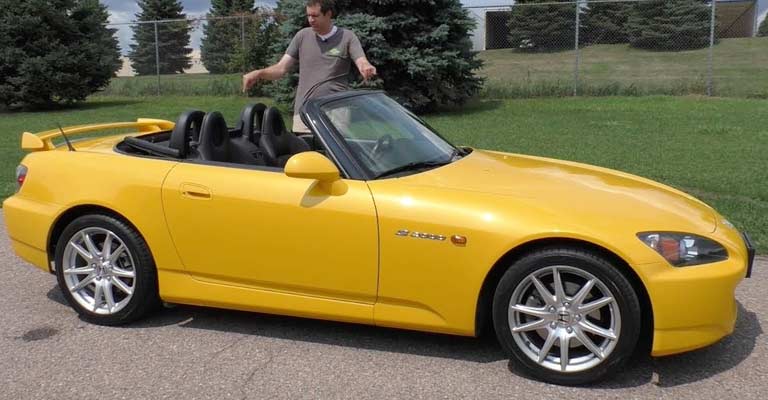Honda S2000 Production Numbers: The Surprising Truth
The Honda S2000. A name that conjures images of spirited driving, screaming VTEC engines, and a cult following that spans continents. But beyond the thrilling on-road experience, lies a fascinating story of production numbers, and the surprising reality behind how many of these iconic roadsters actually graced the world’s streets. This article dives deep into the Honda S2000 production figures, debunking common myths and providing a comprehensive overview for enthusiasts and potential buyers alike.
The Genesis of an Icon: A Brief History
Before we delve into the numbers, it’s crucial to understand the S2000’s origins. Launched in 1999 to celebrate Honda’s 50th anniversary, the S2000 (named for its 2.0-liter engine) was a bold statement. It was a front-engine, rear-wheel-drive roadster, designed to rival the best from Europe and America. Its high-revving engine, balanced chassis, and engaging driving dynamics quickly cemented its status as a modern classic. The S2000’s production run spanned a decade, with significant changes occurring throughout its lifecycle, ultimately influencing the final production figures.
Global Production Breakdown: Unveiling the Totals
The total number of Honda S2000s produced is a key piece of information for collectors and enthusiasts. While often debated, the generally accepted figure is around 110,634 units produced globally. However, breaking down those numbers reveals further nuances.
- Production Years: The S2000 was produced from 1999 to 2009.
- Key Markets: The primary markets for the S2000 were:
- North America (United States and Canada)
- Japan
- Europe (including the United Kingdom)
- Other markets (Australia, etc.)
- Model Variations: The S2000 saw two major revisions, known as the AP1 (1999-2003) and AP2 (2004-2009). These revisions included changes to the engine, suspension, and styling.
AP1 vs. AP2: Production Differences
The production split between the AP1 and AP2 models is another important factor. While precise figures can vary slightly depending on the source, the following provides a general understanding:
- AP1 Production: Accounts for a significant portion of the overall production, likely around 60-65% of the total.
- AP2 Production: Constitutes the remaining 35-40%, reflecting the model’s later years.
These differing production numbers are a crucial consideration when assessing the rarity and value of a specific S2000 model. The AP1, being older, is often considered more desirable by some purists, while the AP2 benefits from later refinements.
Decoding the Production Numbers by Region
While precise breakdowns by region can be difficult to obtain, we can make some educated estimates:
- North America: Likely the largest market, accounting for a significant percentage of the total production. The United States alone received the lion’s share.
- Japan: A strong market for the S2000, especially considering its roots.
- Europe: A smaller but still significant market, with the UK being a particularly strong consumer.
- Other Markets: Australia, and various other countries received smaller allocations.
Why These Numbers Matter to Owners and Collectors
Understanding the production numbers has several implications for owners and collectors:
- Rarity and Value: Lower production numbers often correlate with higher market value. Certain colors, years, and trims are more sought after, further influencing price.
- Future Appreciation: The S2000’s iconic status and relatively low production numbers contribute to its potential for future appreciation.
- Parts Availability: While Honda’s reputation for parts availability is strong, the lower production volume means that certain model-specific parts may become scarcer over time.
- Community and Knowledge: Knowing the production figures allows enthusiasts to better understand the car’s place in automotive history and connect with fellow owners.
Production Challenges and Factors Influencing the Numbers
Several factors influenced the Honda S2000’s production run:
- Economic Conditions: The late 1990s and early 2000s saw fluctuations in global economic conditions, which impacted sales.
- Competition: The roadster market was competitive, with offerings from Mazda, BMW, and other manufacturers.
- Model Updates and Refreshments: The AP2’s introduction in 2004 helped to keep interest alive, but the overall production cycle was finite.
- Honda’s Strategic Decisions: Honda ultimately decided to discontinue production, likely due to a combination of factors, including market demand and the company’s product strategy.
Conclusion: A Lasting Legacy
The Honda S2000’s production numbers, while not record-breaking, underscore its status as a true driver’s car and a future classic. The relatively low production volume, combined with its exceptional performance and design, has solidified its place in automotive history. Whether you’re a seasoned owner, a prospective buyer, or simply an admirer of this iconic roadster, understanding the production numbers provides a deeper appreciation for the S2000’s legacy and its enduring appeal. The surprising truth is that the rarity, the driving experience, and the enduring enthusiasm of its owners have made the S2000 a truly special machine.
Frequently Asked Questions (FAQs):
What is the exact total production number of the Honda S2000? The generally accepted figure is approximately 110,634 units produced globally.
What’s the difference between the AP1 and AP2 models? The AP1 (1999-2003) and AP2 (2004-2009) models represent revisions to the S2000. The AP2 introduced changes like a larger engine, revised suspension, and styling updates.
Is the Honda S2000 a good investment? The S2000’s value has been appreciating over time, making it a potentially good investment, especially for well-maintained examples. However, investment values are always subject to market fluctuations.
Where can I find the most accurate production numbers by year and region? Obtaining exact figures by year and region can be challenging. However, reputable sources like automotive enthusiast forums, specialist publications, and historical Honda documentation are your best bet for the most detailed information.
Why did Honda discontinue the S2000? While the exact reasons are complex, factors likely included market demand, competition, and Honda’s strategic decisions about its product lineup.




